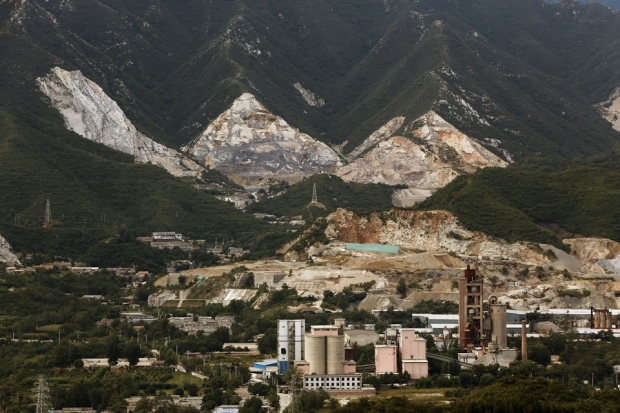None of China’s so-called low-carbon industrial zones currently live up to the name. That’s the conclusion to draw from the work of the U.S. Institute for Sustainable Communities (ISC), which this year released a guide for the development of green industrial parks in China. The organization attempted to rank China’s leading industrial zones against a set of low-carbon criteria; not one reached the pass mark of 60 percent.
What are low-carbon industrial zones? It seems that’s not an easy question to answer—even for those running them. “The government came to examine our low-carbon plans, but they stopped halfway through, telling us to ‘figure out what makes an environmentally friendly or low-carbon industrial zone first,’” said an official at one Jiangsu industrial park.
His zone is mainly home to automobile firms. It was designated an environmentally friendly development by the local government, and instructed by the provincial government to start the transformation to a low-carbon zone. But like in many other industrial parks in China, the managers don’t actually know what that means.
The ISC guide attempts to define the concept of a low-carbon industrial zone: “The zone system should produce the least amount of greenhouse-gas emissions while still maximizing social and economic output in order to [achieve] social, economic and environmental sustainability.” It should also realize “efficient use of land, resources and energy.”
No Zones Reach Low-Carbon Standards
The experts who contributed to the guide were drawn from a wide range of organizations both inside and outside China, including the Guangdong Provincial Academy of Building Research, the U.S. Department of Energy’s Lawrence Berkeley National Laboratory, Suzhou Energy Conservation Centre, and the World Resources Institute.
The assessment system they produced includes twenty-three measures across four major categories: energy use and greenhouse-gas management; recycling economy and environmental protection; zone management and protection mechanisms; and planning layout and land use. Energy use and greenhouse-gas management accounts for 60 percent of a zone’s score, and as such is the key element of evaluation.
Pan Tao, head of ISC’s urban low-carbon project, and Geng Yu, an independent consultant who contributed to the guide, said that none of China’s industrial zones currently meet low-carbon standards.
Globally, there are a few industrial zones with significant strengths. Denmark’s well-known Kalundborg Industrial Zone, for instance, grew out of energy-sharing agreements between companies and the construction of the necessary infrastructure. Japan’s Kawasaki Industrial Zone, meanwhile, is characterized by a circular economy, which emits no waste gases. But there are few examples anywhere in the world of mature low-carbon industrial zones.
No Models, Plans or Standards
On November 22, 2011, the State Council—China’s highest executive body of state power—issued a document on the country’s policy response to climate change, which called for low-carbon trials at industrial zones, communities, and businesses. Industry accounts for 60 percent of all urban greenhouse-gas emissions, and so attention turned to industrial zones.
But there were no models to follow, and no single set of plans or standards. Many low-carbon industrial zones just “went their own way.”
Early last year, Jiangsu province in east China approved twenty-four low-carbon trials, including four at the city level, ten industrial zones, and ten companies. One of these, Xiancheng Environmental Protection Industrial Zone, will be the largest of its kind on completion, covering fifty square kilometers. But Wang Junchun, head of the zone’s Shanghai office, said that “planning only started for the zone in 2009 and there’s no clear idea of what it will look like. We’re waiting for further targets and plans from the provincial authorities.”
Away from the east coast, low-carbon awareness is even lower.
Hu Shengquan, project manager at the Chengdu Low-Carbon and Energy Efficiency Centre, said the city still has no actual low-carbon industrial zones—project funding is spent mainly on research. The city hasn’t applied for any national-level trials either. This is because it has not done enough in the low-carbon field to qualify, and because local government has neither the awareness nor the will to push it forward.
Part of the reason low-carbon industrial zones haven’t caught on is a lack of technological guidance. In most zones, there is a lack of government support.
Wu Yong, a representative of Panyu district in Guangzhou, said the district had already established a team to attract investors to industrial zones, and that financing is being provided for zone development. But companies have little low-carbon awareness and lack motivation. They are more interested in government subsidies and policy backing.
Writing in 2010, Shi Da of the International Business College at North-Eastern University of Finance and Economics said that China’s low-carbon industrial zones were at a very early stage of development, and could not yet be considered low-carbon. With no staggered development goals, unified low-carbon development targets or sources of funding, not to mention a lack of key low-carbon technology, government and business have been unable to coordinate.
Profits Ahead?
But some say there is still cause for optimism.
Professor Shen Jinzhong of Nankai University described the Taida Industrial Zone in Tianjin, north China, as a national-level environmentally friendly industrial zone demonstration project, with excellent infrastructure. Adjustments to the zone’s development goals will see it “easily reach low-carbon industrial zone standards,” Shen said.
Pan Tao is also confident that it will be easy for some zones with the right foundations to become low-carbon in future.
Strong government support has driven the development of China’s industrial zones, which Pan believes is appropriate. But, today, industrial zones have no motivation to go low-carbon, and no concrete guidance on how to do so. Government has restricted itself to issuing instructions, to which business has failed to respond.
Moreover, creating a low-carbon industrial zone needs technical and management support from “low-carbon services firms.” Those organizations need to be able to make a profit if they are to survive and continue to provide services to business. There’s a big future for those service companies in China,” said Pan.




